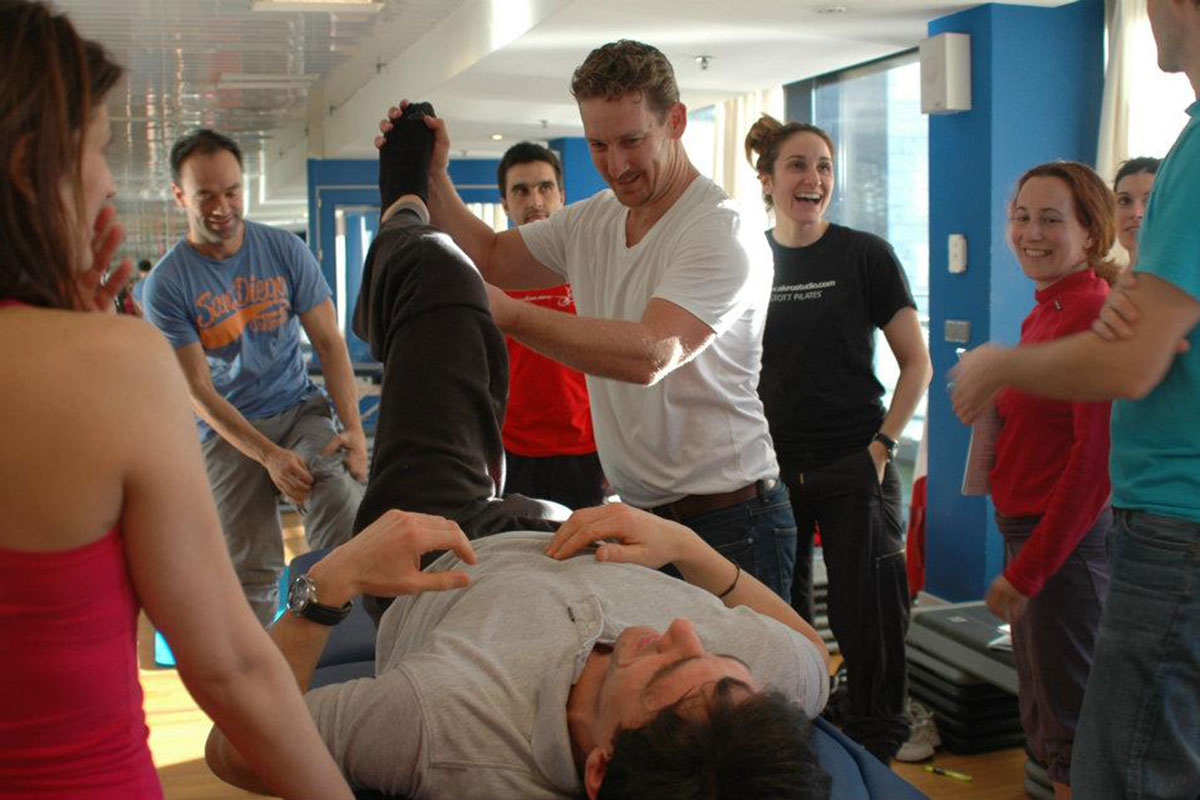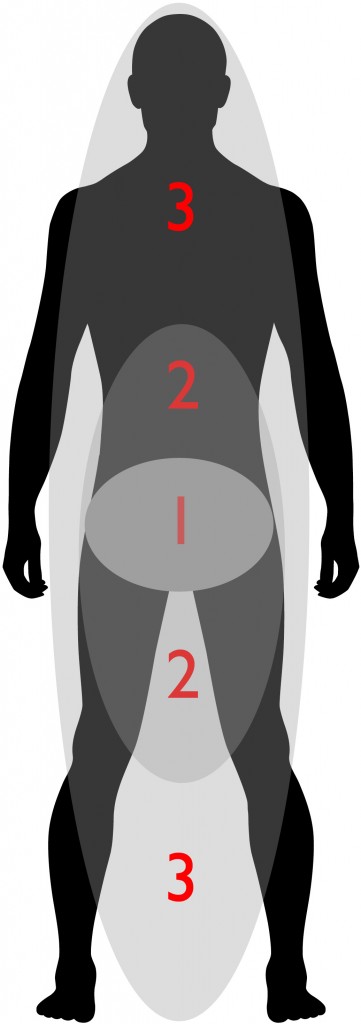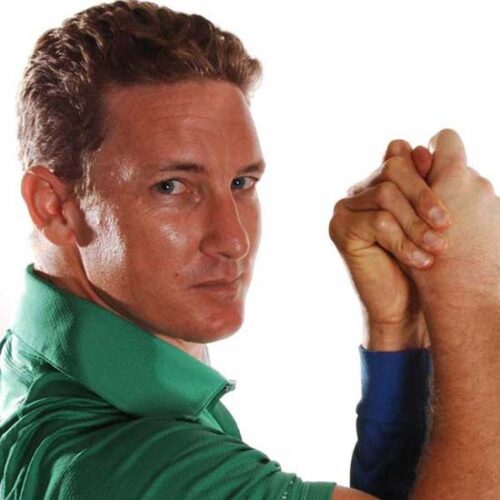Douglas Heel shares a different way to give the body what it needs to perform and overcome pain and dysfunction.
A client comes to you with pain and dysfunction they have had for a long time. They are desperate to find an answer, having been to many therapists and trainers before with limited or no success. They are frustrated and have resigned themselves in their desperation to where they are. They are tough to work with because they hurt when they move and fear doing more damage. So you work with them but you get the same kind of results: they are still in pain and they still struggle to move. It sounds brutal, but this is a story I hear continuously around the world. It’s insanity to do the same thing over and over and expect different results.
Does it sound familiar?
We have learned to have such low expectations of what we and our clients can achieve, both in movement and function, and in overcoming pain and dysfunction. The body is such an amazing thing, yet the results we expect are so limited. Somehow we believe the constant struggle and fight with our body is just the way it is.
But what if the principles we have been taught do not honour the principles of the body? In fact, a lot of them violate these principles and create a conflicted state in the body. So, no matter how good we get at them, no matter how many different tools we have, we are still using them the wrong way for the body and what it needs.
Sounds like I am up for a fight, but really all I want to do is share a different way to look at the body and, with these principles, give the body what it needs to perform and overcome pain and dysfunction.
The ideas I share are under a system called Be Activated. In simplicity, we are looking at the priorities of the body: the need to breathe and the need to move. It will sacrifice anything else to achieve these two things, as they are part of our drive to survive.
Be Activated is therefore the science and art of getting your clients’ bodies to work the way they are meant to work and, in doing so, allow the body to break free of pain and dysfunction. Then it can move into higher states of performance on all levels. For each client, what this means will be different. Performance to an 80-year-old person may be to be able to safely and confidently get out of a chair and walk around. For my athlete, it is in the pursuit of athletic excellence, whatever their level may be.
After performing some quick activation work on one of her athletes before a game in Hawaii, sports coach Ava Faipea said, “I had an audience of coaches, parents and athletes oohing and aahing throughout the process and I picked up five new clients, with requests to visit two other programmes in 15 minutes of activation and questions before the game. Talk about a captive audience!”
In the Be Activated programme we talk a lot about building the body’s resilience to stress and environmental pressures. It’s all fine if you are strong and powerful today, but add a little stress and pressure and your body breaks down, reducing your levels of performance and increasing your risk of injury. We see this in the gym and we see this on the sports field.
In Be Activated, we use measurables in everything we do, so we have a constant feedback loop. We have a before, an intervention and an after. When we do the right thing, the body responds immediately, so we know if what we are doing is successful or not. This honours another principle of the body: it only knows where it is at right now because of where it just was, so if we keep reflecting back, the neural and physiological system has a chance to recognise its patterns and learn new ones.
Not only can we overcome patterns of pain and limitation in our clients, but we can decrease their risk of injury, improve their quality of life and enable their body to go from strength to strength. “I activated a client with knee trouble who couldn’t remember when she could last lunge, weight bearing on one knee and touching the floor with the other. She thinks it might have been at school. She was 50 last month!” says physiotherapist Ross Young. “Within six minutes of activating her, she could lunge again. I used the same activation on a fellow trainer who couldn’t flex his knee past 80° and, within minutes, he managed a 150° flexion. Game-changing.”
The Be Activated system begins with a simple ‘123’ approach.
A body has two priorities for survival – to breathe and to move – and, without both, we will die. All movement begins with the diaphragm, psoas and glutes working in unison (Zone 1). It will find ways to meet its priorities and will sacrifice anything else in order to do this. Imagine looking at someone’s body and realising that their calf, which limits them in movement patterns, actually functions as their butt! No matter how you train them, they will just get better and better at this cheat. But the wonderful thing about cheats is that they always get found out at some point. This will be when the calf is so tired and exhausted because (in this case) it is doing the job of the glute and the hamstring, while also doing a poor version of its own job. To do this it has shortened and tightened and works upside down. In Be Activated, we call this a 333 leg. When it breaks down, this could mean cramping calves, Achilles’ tears and pain, ankle injuries, plantar fasciitis, etc.
When we cheat we lose strength, power, flexibility and endurance, leaving our bodies less resilient and at risk of poor performance, pain and dysfunction, both in the way we move and the way we behave.
With high stress and environmental pressures, compensations are inevitable nowadays – for everyone. Reversing this process happens when you give the body what it really needs in order to function correctly. Be Activated is, in a sense, the rebooting of the body to return it to its original natural physiology.
Think of the perfect body state as a ‘123’ state, where the body expands through movement. Cheat patterns create a collapsing, imploded state where the body collapses in on itself and destroys itself. We code it all – 223, 233, 333 leg and 333 arm … and a zero, which is a state of overwhelm in the body where it cannot effectively find a way to meet its priorities (think flight, fight or freeze). This is the freeze. In an imploded state, the body does not have the space the structure needs to move and so creates poor movement patterns and limitations.
With the 123 system of assessment, we are able to establish why the body is doing what it is doing, by understanding which structures are driving the body’s function. When you understand the why, the how is easy!
Now we can match the stories our clients bring to their physiological measures. Making sure that the signs – those we measure and see – match the symptoms and the story they tell.
From this foundation we can start working to facilitate change. The actual activation techniques, applied in the right way, can seem impossible, magical and weird. The results can be dramatic. I’ve been called a white witch, a magician performing voodoo; but I remind everyone very quickly: we can all do this. My goal is to share what I’ve learned.
What does this mean? We can all help our clients to create immediate, measurable changes that make them feel and function better – that means right now!
As I’ve said, we measure everything so we know we are being effective. But more important than what we measure is how our client feels. Just because it’s exciting that their hamstring released and went 50° degrees further, if they don’t feel better it has no value.
I teach this process to doctors, physiotherapists, chiropractors, osteopaths, trainers, coaches … just about anybody with a willingness to learn. You can learn this in two days. Your application will always be tailored to your scope of practice, whether you use it for hands-on therapy and rehabilitation, training movement or coaching. The principles and techniques will always apply and be relevant.
The short answer I give these days is, “Be Activated is a results-driven system that works with the body’s priorities to achieve immediate, measurable results.”
We use hamstring flexibility as a measure of our effectiveness in activating the diaphragm and the back of the neck to fire the glutes. Why don’t you? As Be Activated practitioner Robert Cotterill says, “The Be Activated course is challenging, informative, engaging, humorous, shocking and enlightening all at the same time! Never has the expression ‘you don’t know what you don’t know’ applied more than in this course!”
About the author
Douglas Heel has a background in physiotherapy and kinesiology. The developer of the pioneering Be Activated system for achieving both immediate and long-term results, he uses the approach in his own practice with elite sportspeople and teams, and also trains fitness and health professionals globally in how to use the method. douglasheel.com
Heel at FitPro LIVE
This July at FitPro LIVE, Douglas Heel will present three sessions:
-
“They may forget what you said, they may forget what you did, but they will never forget how you made them feel.” – Carl W Buechner. In this session, Heel teaches you how to have clear measures of success and how to use language that reflects what your client feels.
-
Heel then presents sequencing the body and explores exercise analysis. Heel opts to look at something you teach every day and asks ‘why’, ‘how’ do you teach it and ‘what’ are your anticipated outcomes? This session is all about resequencing the body with activations, helping to make exercise easier and more effective.
-
For the full session package, you can attend Heel’s session titled ‘Change your mind’. Do you know how to make your clients achieve more? Heel explores how much the mind really impacts on performance.
Book your ticket to FitPro LIVE today and reserve your place at Heels’ sessions: the final countdown has begun. fitpro.com/live










